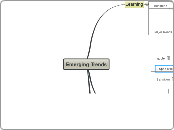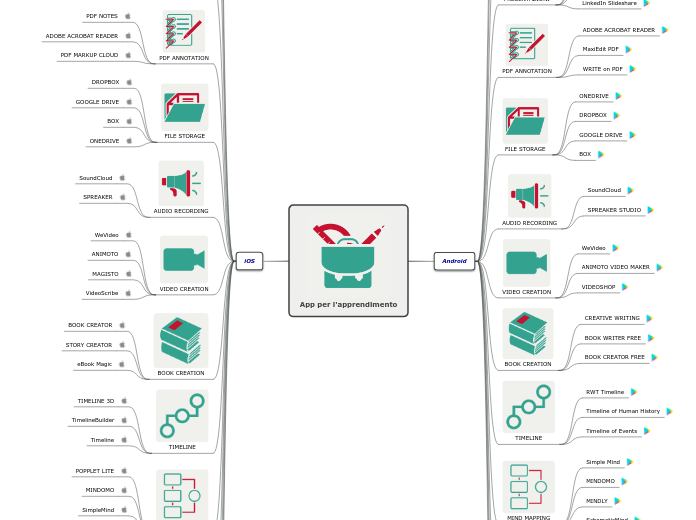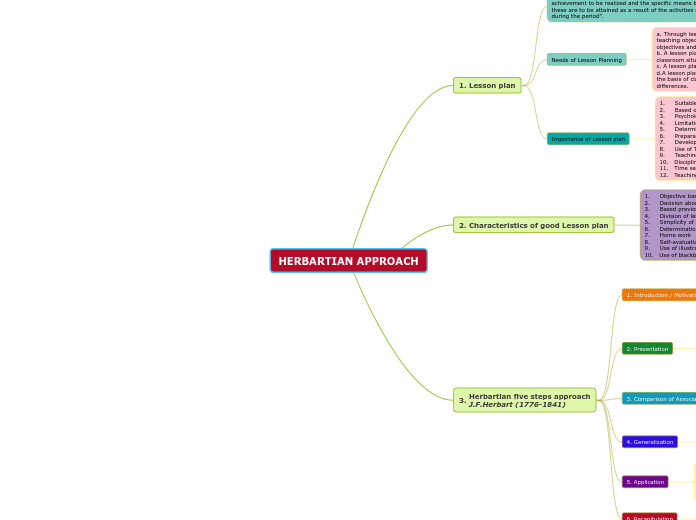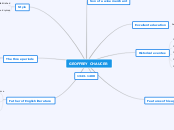Emerging Trends
English
Language
benefits of virtual learning
The Virtual Classroom
Saves travel time and teleconferencing costs
Offers remote synchronous instruction/meeting space
Recordings can be accessed (repeatedly) asynchronously after the event
This model of elearning is sustainable and cost effective
does online learning save you money?
The cost of elearning: does it save you money?
not necessarily…..
Static content, unfacilitated online models can recoup costs in the longer term
Blended learning (online and f2f) can be cost neutral
Solely online facilitated models FACT: it takes longer to effectively teach 15 people online than it does to teach the same amount of content to the same number of people in a classroom
Costs can be offset by employing Open Source software (eg Moodle) and not investing in developing whole course content for preloading
statistics
Top 15 Languages Learned in the U.S.
(based on Fall 2006 Enrollments in U.S. Institutions of Higher Education)
Language % of Enrollment Language % of Enrollment
1. Spanish 52.2%
2. French 13.1%
3. German 6%
4. American Sign Language 5%
5. Italian 5%
6. Japanese 4.2%
7. Chinese 3.3%
8. Latin 2%
9. Russian 1.6%
10. Arabic 1.5%
11. Ancient Greek 1.4%
12. Biblical Hebrew 0.9%
13. Portuguese 0.7%
14. Modern Hebrew 0.6%
15. Korean 0.5%
204 lesser taught languages
In addition to the traditionally taught languages, American college and university students are learning 204 less commonly taught languages indigenous to regions throughout the world. These include such languages as Amharic, Swahili, Persian, Hindi, Modern Greek, Hawai'ian, Polish, and Vietnamese.
what languages?
Spanish continues -- as it has since 1970 -- to be the most widely taught language at American colleges and universities across the country.
Enrollments in French, German, and Russian continue to grow at a steady pace,
while the percentages of students taking American Sign Language, Italian, Japanese, Chinese, Arabic, Portuguese, and Korean have grown dramatically.
Of the top 15 languages learned, Chinese and Arabic grew most rapidly on a percentage basis during the period under study.
more students enrolled than ever before
Over 1.5 million college students were enrolled in language courses in Fall 2006
hire tutors online
native speaker
tools
software
interactive whiteboards
video-conference
messengers
mp3
cell
computer
transition
Underlying the transition from formal, structured learning to more informal and more unstructured learning is not simply a technological change but also a social change.
Link: http://www.masternewmedia.org/online-learning-trends-models-and-dynamics-in-our-education-future-part-1/#ixzz1K1gYTxYI
2 types of learning
Informa
People pursue their own objectives in their own way, while at the same time initiating and sustaining an ongoing dialogue with others pursuing similar objectives.
Learning and discussion is not structured, but rather, is determined by the needs and interests of the participants.
There is no leader; each person participates as they deem appropriate.
There are no boundaries; people drift into and out of the conversation as their knowledge and interests change.
Link: http://www.masternewmedia.org/online-learning-trends-models-and-dynamics-in-our-education-future-part-1/#ixzz1K1gR1T1S
Formal
Students pursue the same objectives employing the same methodologies. This is especially evident in corporate learning, where they are expected to share the same vision and to be pursuing the same outcomes.
Learning in such classes is frequently collaborative, as students work in small groups to produce a common project or outcome. (Mohn & Nault, 2004).
Interaction is structured and led by an instructor.
Classes are closed; there is a clear barrier between members and non-members.
Link: http://www.masternewmedia.org/online-learning-trends-models-and-dynamics-in-our-education-future-part-1/#ixzz1K1gEgvls
quote
Education by and large has not changed. The world outside has. Syllabus/curriculum is rooted in a past paradigm of fixed knowledge
Learning
Major Trends
Partners and collaborators use e-learning to get everyone on the same page sooner.
Governments deploy e-learning at all levels
Gamers bring interactive skills to e-learning
E-Learning levels professional playing field around the world.
Churning skill sets require e-learning initiatives.
With job descriptions and daily tasks evolving faster than schools can produce qualified job candidates, many employers rely on constant, on-the-job training to remain competitive.
Companies integrate e-learning into their infrastructure.
Business
view online courses are modern and competent
“Universities offering distance education are often perceived as modern and [technologically] competent, thus creating a competitive advantage” (Bishop, 2003, p. 374).
more tolerance for online degrees
“human resource professionals and hiring managers are becoming more accepting of online degree credentials” (“Lifelong,” 2002, p. 77).
Technology
There is a huge growth in Internet usage.
Not only is technology becoming more ubiquitous, it is being used more competently by more people from all nationalities, age groups, and socioeconomic levels (Murray, 2003).
Technological devices are becoming more versatile and ubiquitous
Infrastructures are growing stronger as computers double in speed while decreasing in cost, and high-speed network connections continue to expand. Computer, fax, picture phone, duplication, and other modalities are merging and becoming available at ever cheaper prices (Cetron, 2003).
Adaptive Learning Environments
virtual simulations
Second Life
mobile learning
Economic Trends
funding for IT
A study from the Colorado Department of Education reported that “the cost per student of a high-quality online learning program is the same as or greater than the per-student cost of physical school [i.e., traditional] education” (Branigan, 2003, p. 1).
recession
With the economy in recession, there are fewer resources for higher education and higher education, initiatives, such as distance education.
Academic trends
Academic emphasis is shifting from course-completion to competency.
Diplomas are less meaningful to employers; knowledge, performance, and skills are what count to them (Callahan, 2003).
De Alva (2000) also found this trend; 66% of governors identified “integrating applied or on-the-job experience into academic programs” as a critical characteristic of universities in the 21st century (p. 34, 36, 40; see also BYU DCE Unit Review, 2001).
massive pedagogical shift
A pedagogical shift is likewise occurring within distance education, moving from a transmission model to constructivist, sociocultural and metacognitive models. These models use computer-mediated communication and emphasize students’ responsibility for their own learning (Rumble, 2001; Miller, 2001).
Instruction is becoming more learner-centered, non-linear, and self-directed.
“recursive and non-linear, engaging, self-directed, and meaningful from the learner’s perspective” (McCombs, 2000, p. 1)
traditional campuses declining
Dunn (2000) projected changes in higher education’s landscape over the next 20 years. “The number of degree-granting institutions will continue to grow, while the number of traditional campuses will decline. By 2025, half of today’s existing independent colleges will be closed, merged, or significantly altered in mission” (p. 37).
Knowledge and information are growing exponentially.
“In the past, information doubled every 10 years; now it doubles every four years” (Aslanian, 2001, p. 5; see also Finkelstein, 1996).
Enrollment trends
40% increase every year
Not only is online learning more common now, but it increases 40% annually (Gallagher, 2002).
older students are learning
Online students are becoming an entirely new subpopulation of higher-education learners. They are “generally older, have completed more college credit hours and more degree programs, and have a higher all-college GPA than their traditional counterparts” (Diaz, 2002, pp. 1-2).
Xokmax Youtube demographics
adult learners are the fastest-growing population in higher education
Not only are they numerous, adult learners are the fastest-growing population in higher education. While the number of 18-24-year-old students increased only 41% between 1970 and 2000, the number of adult students increased 170% (Aslanian, 2001; “Lifelong,” 2002).
students shopping for courses that fit their schedule and circumstances
students learning online
More and more learners are requiring flexibility in program structure to accommodate their other responsibilities, such as full-time jobs or family needs (PSU, 1998).
Students’ demand is being supported and answered. In 1998, 83% of governors identified “allowing students to obtain education anytime and anyplace via technology” as a critical characteristic of universities in the twenty-first century (de Alva, 2000 pp. 34, 38).
schools going online
Distance Learning is not new
Distance education has existed in some form or another since the 1800s.
Problems with traditional learning
group of people
starting at the same time, studying the same materials at the same pace, and ending at the same time.Link: http://www.masternewmedia.org/online-learning-trends-models-and-dynamics-in-our-education-future-part-1/#ixzz1K1gilYFR
Quote
"In the future students will not be constrained by the limits of the classroom model. They will set their own curriculum and proceed at their own pace. Learning can thus be based on a student’s individual needs, rather than as predefined in a formal class, and based on a student’s schedule, rather than that set by the institution." - Stephen Downes
Link: http://www.masternewmedia.org/online-learning-trends-models-and-dynamics-in-our-education-future-part-1/#ixzz1K1fcITMY









